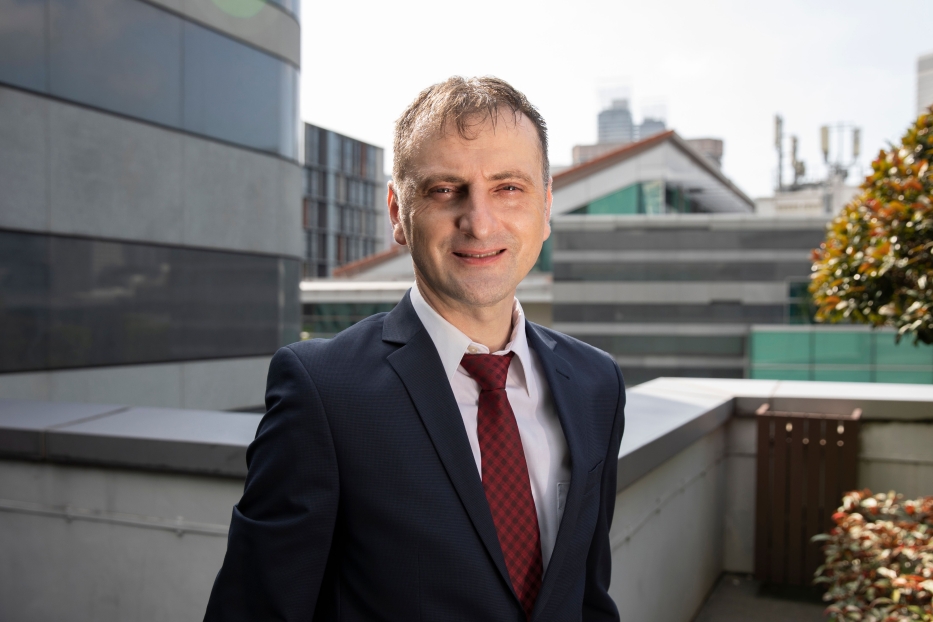Prof Ismail Baydur

Feature on Ismail Baydur, Assistant Professor of Economics
School of Economics, Singapore Management University
Combatting unemployment to improve lives
Job hunting can be frustrating and mysterious, especially when calls offering interviews become fewer and farther between. Assistant Professor Ismail Baydur researches the larger forces that might be at work when the phone stops ringing, with the aim of creating a fairer job market.
The two things that make non-economists sit up and take notice of labour market trends are economic crises and long-term unemployment. In the case of Assistant Professor Baydur, Turkey’s economic difficulties in 2001 turned his head from a career in engineering—the popular choice among his peers—to one in macroeconomics and labour markets.
“The economic crisis happened when I was about to enter university. Unemployment was high, especially for particular groups, even when the economy began to recover later,” recalls Baydur. The imbalance of the situation spurred him to study the macroeconomic aspects of labour markets. He eventually gained a master’s from Turkey’s Koc University and a PhD in labour markets from the University of Virginia, joining ADA University in Azerbaijan before moving to SMU’s School of Economics in 2016.
“People in long-term unemployment face discrimination. The longer communities and individuals remain in unemployment, the lower their prospects are for finding a job,” says Baydur, whose research focus shows empathy for the more vulnerable in the labour market.
Baydur cited a 2013 paper by Kory Kroft and his colleagues—a study that his current work built on. In the paper entitled, “Duration dependence and labour market conditions: evidence from a field experiment”, the authors found that the likelihood of receiving a call-back for an interview significantly decreases with the length of an applicant’s unemployment duration.
In the study, fictitious resumes were used to apply for real job vacancies and the proportion of applications which received a call-back for an interview was measured. The key difference between the resumes was in the unemployment length—from zero months where the applicant was currently employed, to three years.
This study demonstrated statistical discrimination against unemployed workers and the role companies play in generating “negative duration dependence” —the adverse effect of a longer unemployment spell. “These individuals who suffered from the discrimination won’t stand a chance if they can’t even get an interview,” explained Baydur.
To that end, Baydur and his colleague Assistant Professor Xu Jianhuan worked to build a case to address statistical discrimination. They first developed a model which accounts for the different sources of negative duration dependence. In turn, by adjusting the parameters associated with each source, they were able to assess the impact of potential policy interventions—shutting down the statistical discrimination channel increases the job finding rate of a worker with an unemployment period of 24 months by about three-fold, on average from 0.121 to 0.335.
“The Great Renegotiation” is not something new
As an expert in job transition, the effects of the COVID-19 pandemic are of great interest to Baydur, who expects the ongoing impacts will—not unlike any economic shock—require many people to change their work lives. He is particularly interested to see data on job transition during the pandemic as it emerges. Until then, he has a nuanced view on talk about “the great resignation” and “the great renegotiation” brought about by the disruption, which has seen people change jobs and change their expectations of what their work life should offer them.
“This is not a completely new phenomenon,” Baydur says. “Job-to-job transitions where people quit to pick a better job has always been present. Historically, particularly in the US, we observe this taking place more frequently during booms and less so during (a) recession.”
While there is a spike in transition rates due to the pandemic, Baydur points out this takes place against the backdrop of an overall downward trend of job transition rates. “More data is needed to see if the overall levels will continue to fall,” he explains. “Decreasing transition rates could mean that labour markets are getting less fluid and re-allocation of labour is discouraged. To policymakers, this could be a problem as it could slow down productivity growth and it is important to understand the source of the decline.”